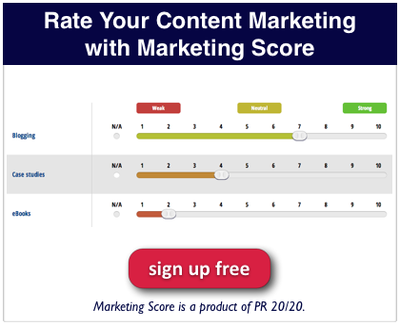 We’re all publishers. Blogs and social networks have made it easier than ever for companies and individuals to be heard. Yet, with this opportunity comes great responsibility.
We’re all publishers. Blogs and social networks have made it easier than ever for companies and individuals to be heard. Yet, with this opportunity comes great responsibility.
Everything we publish must withstand both legal and ethical standards, or we risk diminishing our brands and even our pocketbooks.
In this post, we discuss copyright basics, and how you can protect both yours and others’ intellectual property.
Avoid Copyright Infringement
Almost all content is protected under copyright—regardless of whether it was registered with the U.S. Copyright Office or features the © symbol. As such, the copyright holder maintains the rights to its use and distribution.
That said, fair use allows others to use portions of copyrighted work without authorization to promote criticism, comment, news reporting, teaching, scholarship and/or research. Unfortunately, fair use is a gray area that is often left to individual interpretation.
To decide if something is fair use, the U.S. Copyright Office cites four factors for consideration: “(1) the purpose and character of the use, including whether such use is of a commercial nature or is for nonprofit educational purposes; (2) the nature of the copyrighted work; (3) the amount and substantiality of the portion used in relation to the copyrighted work as a whole; and (4) the effect of the use upon the potential market for or value of the copyrighted work.”
Before publishing the work of others, gauge it against the four factors above to determine if use is permissible. At a very basic level, it’s much harder to claim fair use if you are financially benefiting from the material, reveal the heart of the work or lengthy excerpts, and/or decrease the copyright holder’s profits from it.
A few tips to help you avoid copyright infringement include:
- Take from others sparingly; ask yourself, “How much do I really need from this piece to prove my point?”
- When you do quote others’ material, be sure to also include your own thoughts, comments and critiques. Add to the discussion.
- Don’t reveal the heart of the work. If reading your piece diminishes the need to read the original, you may be overstepping fair use guidelines.
- If the copyright holder included a policy for how their content can be used, adhere to it. For instance, many newspapers and magazines have attribution guidelines and/or set processes in which you can request permission to quote their material.
- Attribute all material used by pointing readers to the original source of the text or idea.
- Put yourself in the copyright holder’s shoes. How would you feel if someone used your work in a similar way? Follow the Golden Rule.
- When in doubt, ask for permission. It’s always better to error on the side of caution.
Protect Your Original Content
Fair use goes both ways; so it’s also important to monitor how your content is being used and published. Hint: This KISSMetrics post explains how to identify content scrapers and mentions.
Sometimes, unauthorized use of your content will be beneficial to you, and not something you’d want removed—like a quote from one of your blogs posts in a well-read publication. In those cases, make sure that proper credit is given or, if it’s not, claim ownership.
Other times, content use may infringe on your rights. For example, we’ve had a few instances where entire PR 20/20 blog posts or website pages were copied and republished without attribution. In these cases, it is okay to exercise copyright, and request material be taken down.
To do this, we recommend reaching out to the site owner or author via email first. It may just be a misunderstanding or unintentional transgression. If that route proves unsuccessful, then file an official complaint under the Digital Millennium Copyright Act (DMCA).
Relatedly, to prevent unauthorized use, it’s helpful to explain how your content can and cannot be used. If you don’t want it reproduced at all, indicate that. If you don’t mind others sharing and building upon it, include a Creative Commons license or open it to the public domain.
Related Resources
Looking for more on fair use and copyright? Check out the resources below to get started:
- What Bloggers Should Know About Copyright and Fair Use by Gabriel Malor (@gabrielmalor)
- Blog Basics: Copyright and Fair Use by GCF Learn Free
- How Does Fair Use of Copyrighted Work Apply to Branded Content? by Jay Krall (@jaykrall)
- What’s Fair About Fair Use? Defending a Copyright Infringement Claim by Sarah Bird (@sarahbird)
- Navigating Copyright Law and Image Use by Keith Moehring (@keithmoehring)
What are your concerns regarding copyright? Share them below!
Image Source: Maria Elena
Disclaimer: I am not a lawyer and this blog post should not be viewed as legal advice.

%20Logo_BlueOrange_Trademark.png?width=800&height=269&name=Ready%20North%20(RN)%20Logo_BlueOrange_Trademark.png)




.jpg?width=300&name=Services%20Hub%203%20(3).jpg)


